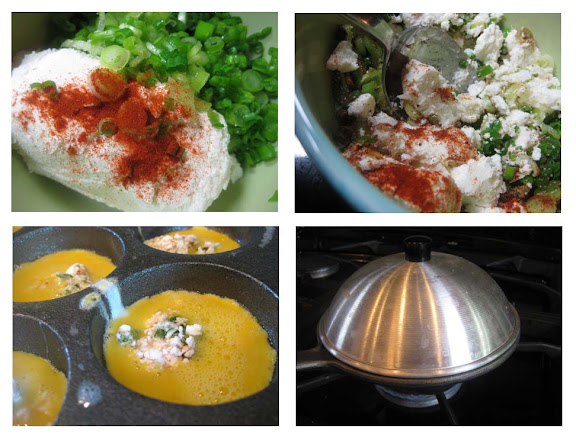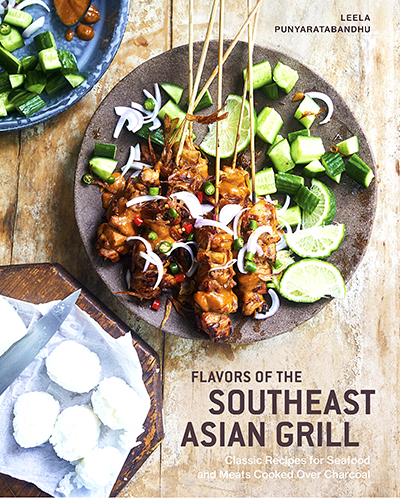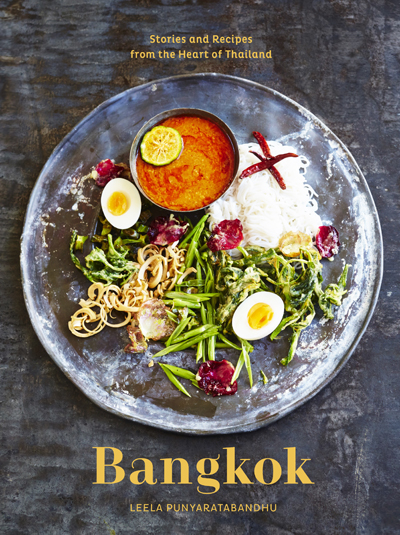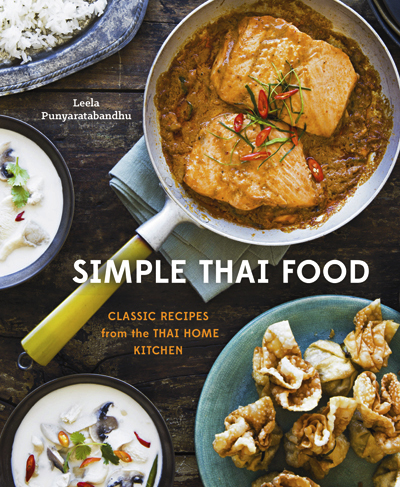
When an American sees me peel something with a knife — be it a piece of fruit or a potato — he or she invariably makes a comment about the way I hold the knife. Apparently, Americans generally hold their knife with the blade facing the body and, with the thumb guiding the knife, also work their way toward the body as they go. (The only exception to this is when they use a vegetable peeler in which case the peeling is done in quick strokes away from the body.) This is my observation. If you’re an American and you don’t peel this way, I’d say you’re definitely in the minority.
Thais, and perhaps other Asians, hold a knife with the blade facing away from the body and also peel away from the body, guiding the knife with the index finger. I can’t explain this cultural disparity. I am not presenting one way as better than the other either. I’m just reporting it.
That’s how we peel a mango — a ripe one, that is. (We have 2-3 different ways of peeling and slicing a green mango, but that’s irrelevant here.) Peeling a mango with a knife is as common to us as flipping a pancake or a burger patty is to most Americans. It’s done in a simple, straightforward, gadget-free fashion. It’s so instinctive that we don’t even think about it. When I told one of my cousins that I was going to blog about how to peel a mango, she wondered out loud whether I had completely run out of blogging ideas.
During my mother’s last visit to the US, we watched a cooking show together. You should have seen her reaction when the chef demonstrated three ways to cut a mango. The first was done by cutting the fruit — skin and all — into two halves, flipping each half over so the mango half rests on the skin side, scoring the flesh with a knife, and scooping out the scored flesh with a spoon. The second method was done with what the chef thought was the greatest kitchen tool ever — OXO mango splitter. The last method was done by slicing a piece off the base of the mango, standing it on the base, and slicing off the skin (along with half of the edible flesh in the process, unfortunately) the way one would a butternut squash.
My mother looked at the TV screen then at me. Not just her face, but her whole being, turned into a big question mark. No trace of self-righteous incredulity was found on her face; just sheer puzzlement. All that was followed by a monosyllabic utterance that captured it all, “Why?”
You see, I am a self-proclaimed non-dexterous dunce. So I’m the last person to tell you how you should peel a mango. This is just a post on how the Thai people peel a ripe mango, especially when it’s prepared for our traditional dish — mango with coconut sticky rice.
How to Tackle a Ripe Mango the Thai Way
1. Start off by getting a good semi-ripe mango from the store. You shouldn’t buy a mango that is perfectly ripe, but one that is a day or two before it reaches that stage. Perfectly ripe mangoes are very fragile and can easily get bruised in transit. It’s better to let your mango ripen on your kitchen counter than in a huge pile of mangoes at the store where it gets fondled by other shoppers.
2. Wash the mango thoroughly. The dirt and pesticide residue on the skin can be transferred to the exposed flesh through contact with your hands.
3. With a very sharp knife (or a serrated knife which works very well), make a shallow under-the-skin slice at the top of the mango. With your thumb pushing the blade (away from your body) and your index finger navigating the path, slowly peel a strip of skin off the mango along the curvature of the fruit. Start off with a thin strip as the wider the strip, the more likely you are to slice off too much flesh along with the skin.

4. Once the entire mango is peeled, position your knife parallel with the wide surface of the pit. (A mango is built like a fish with its flesh analogous to the fish meat and the pit analogous to the spine bone. So “fillet” a mango the way you would a fish.) Make a cut as close to the pit as possible. In see-sawing motion, work your knife blade along the length of the pit all the way to the end tip of the mango.
5. Cut the mango crosswise into thick slices. Serve immediately.













